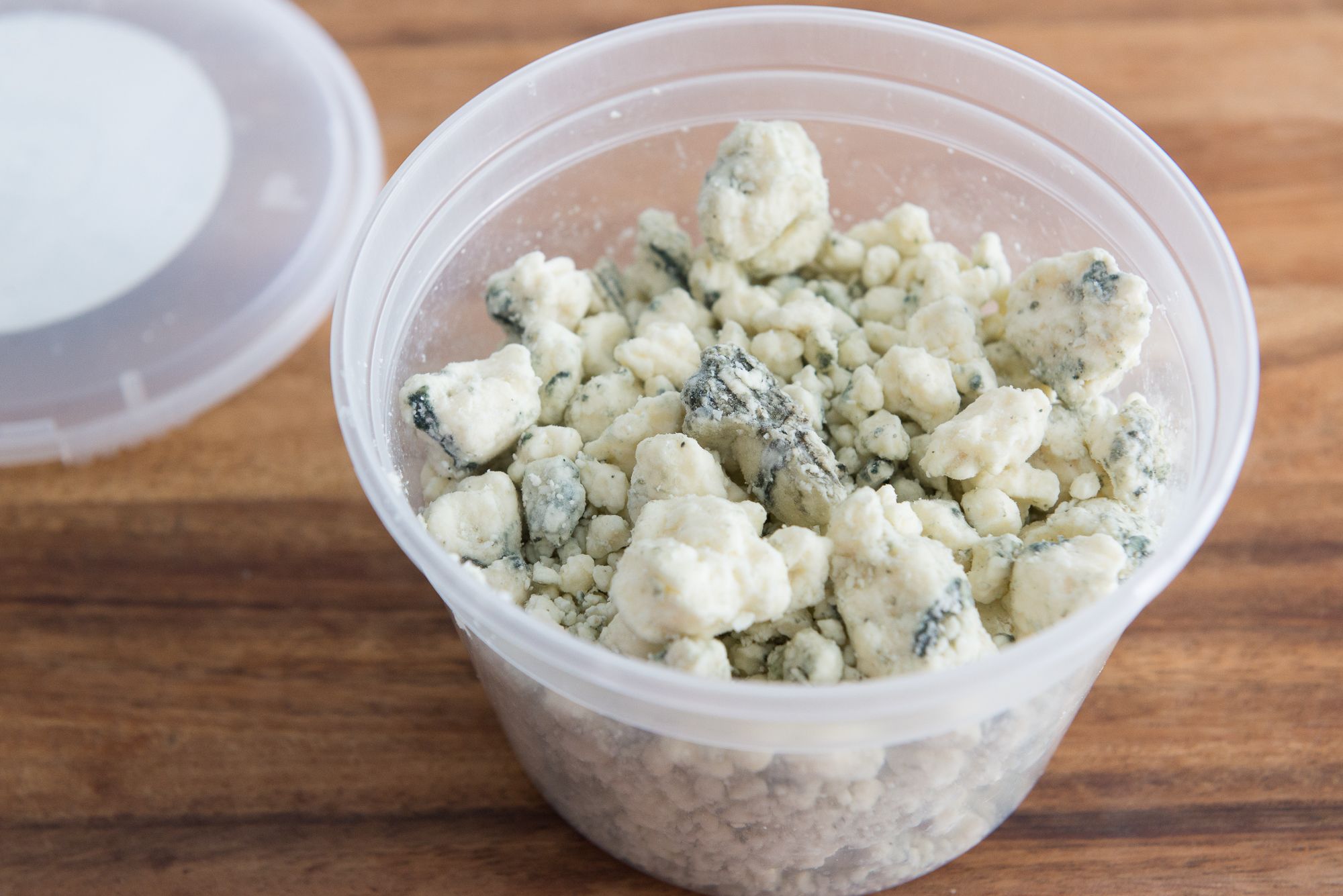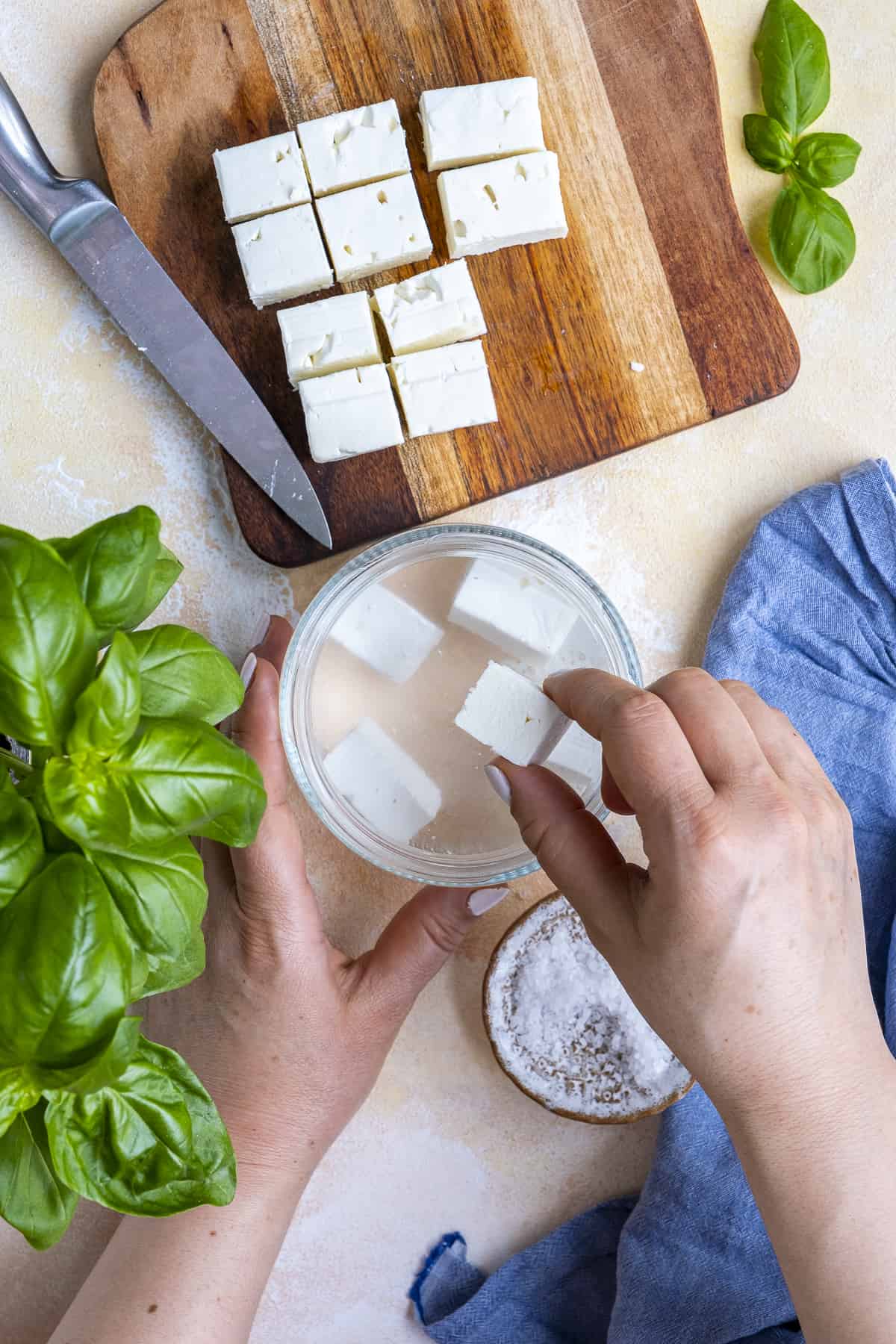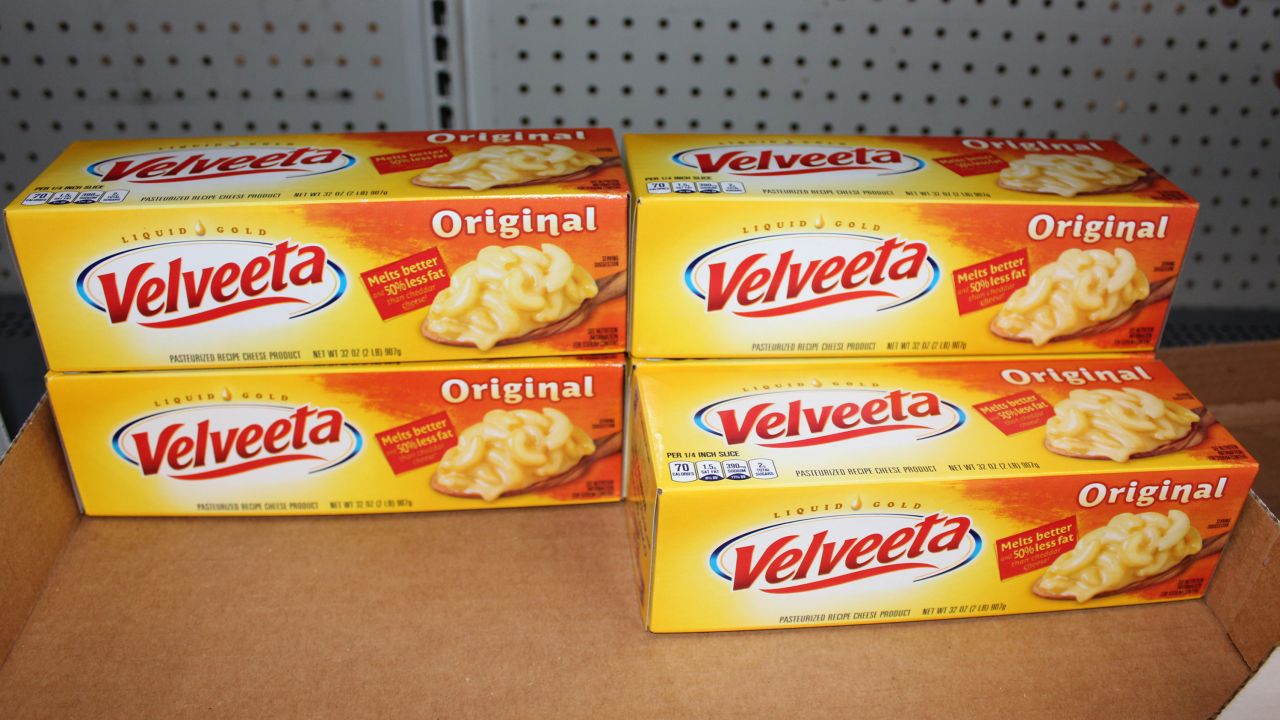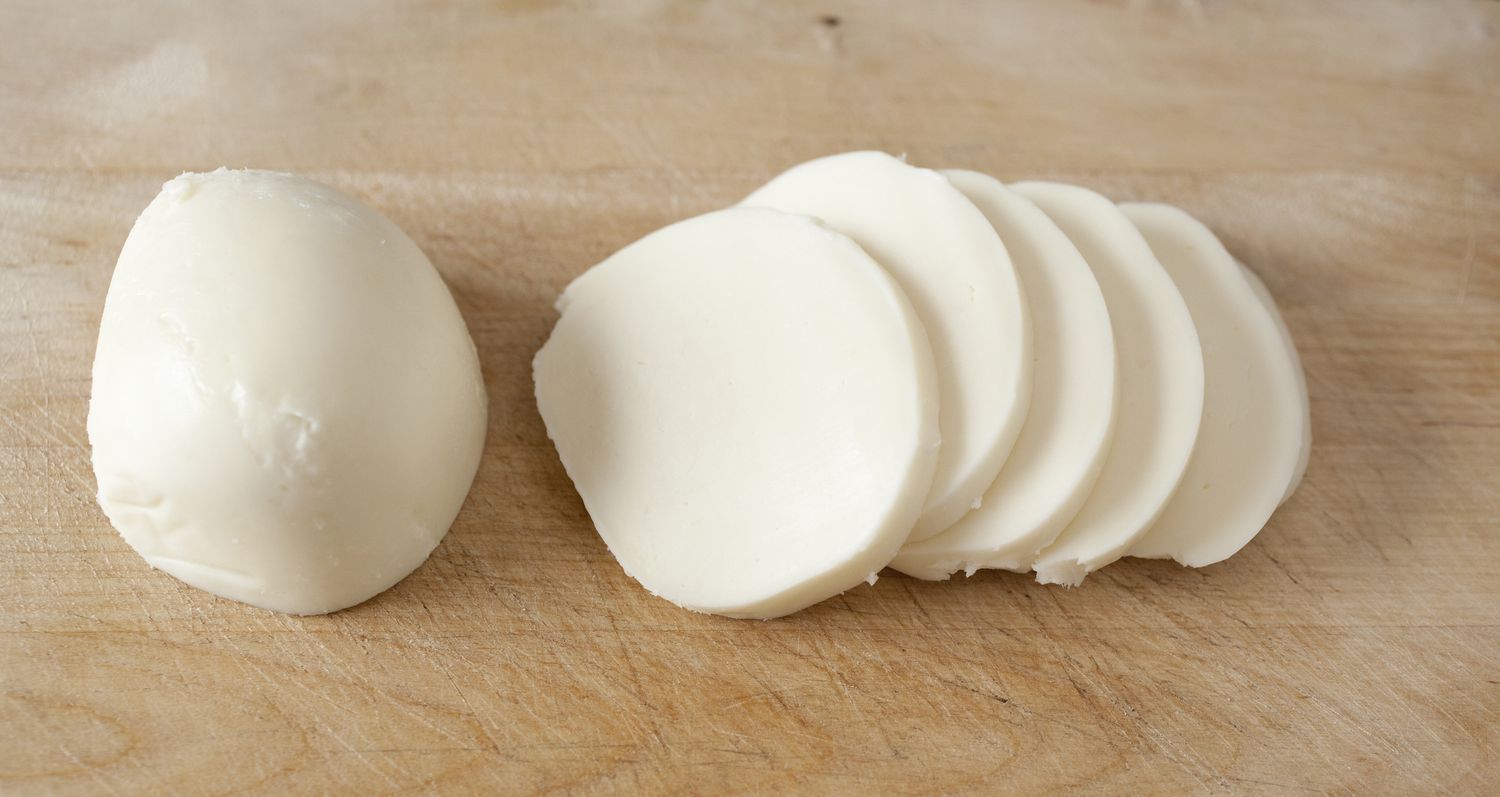

Articles
How To Store Cheese Danish
Modified: January 18, 2024
Learn how to properly store cheese danish to maintain its freshness and flavor. Our articles provide helpful tips and guidelines for preserving your favorite treat.
(Many of the links in this article redirect to a specific reviewed product. Your purchase of these products through affiliate links helps to generate commission for Storables.com, at no extra cost. Learn more)
Introduction
Welcome to the delicious world of cheese Danish! These sweet and flaky pastries, filled with a creamy and tangy cheese filling, are a treat for the taste buds. Whether you’ve just picked up a box of freshly baked cheese Danish from your favorite bakery or you’ve made them from scratch at home, you’ll want to ensure that they stay fresh and delicious for as long as possible.
In this article, we will guide you through the best methods for storing cheese Danish, whether you’re planning on enjoying them right away, refrigerating them for a few days, or even freezing them for later. By following these tips, you can maintain the quality and flavor of your cheese Danish, ensuring that every bite is as scrumptious as the first.
So, get ready to dive into the world of cheese Danish storage and discover the secrets to preserving their delectable taste and texture. Let’s begin!
Key Takeaways:
- Keep cheese Danish fresh by choosing high-quality pastries, storing at the right temperature, and avoiding exposure to air and strong odors. Enjoy within recommended time frames for the best taste and texture.
- Maximize the shelf life of cheese Danish by proper sealing, separating flavors, and portion control. Thaw and reheat frozen pastries carefully to maintain their delightful flavors and textures.
Read more: How To Store Danish Pastries
Choosing the Right Cheese Danish
When it comes to cheese Danish, the first step in ensuring optimal freshness is selecting the right pastries. Whether you’re buying them from a bakery or making them at home, here are some factors to consider:
- Freshness: Look for cheese Danish that are freshly baked or made. Check for any signs of staleness, such as a dry or crumbly texture, as this could indicate that they have been sitting for too long.
- Quality of Ingredients: Pay attention to the ingredients used in the cheese Danish. Opt for pastries made with high-quality ingredients, such as real butter and premium cheese, as they will contribute to the overall taste and freshness.
- Flavor Variation: Cheese Danish comes in various flavors, such as plain cheese, fruit-filled, or even chocolate-swirled. Consider your preferences and choose the flavor that appeals to you the most. Keep in mind that certain fillings, like fruity ones, may have a shorter shelf life.
By considering these factors, you can ensure that you’re starting with a delicious and fresh batch of cheese Danish, which will make the storing process even more worthwhile.
Storing Cheese Danish at Room Temperature
If you plan on devouring your cheese Danish within a day or two, storing them at room temperature is a convenient option. Follow these guidelines to keep your pastries fresh:
- Choose a Suitable Container: Place the cheese Danish in an airtight container or wrap them tightly in plastic wrap. This helps to prevent exposure to air and moisture, which can lead to staleness and spoilage.
- Find a Cool Spot: Locate a cool and dry area in your home where you can store the cheese Danish. Avoid placing them near direct sunlight, as this can cause the pastries to become too warm and lose their texture.
- Keep Away from Strong Odors: Cheese Danish can absorb smells from other foods, which can alter their taste. Store them away from strong-smelling foods, such as onions or garlic, to maintain their original flavor.
- Check for Freshness: Before enjoying your cheese Danish, give them a quick visual and sensory check. Look for any signs of mold or spoilage, such as a foul odor or unusual texture. If in doubt, it’s better to be safe than sorry and discard the pastries.
It’s important to note that cheese Danish stored at room temperature have a shorter shelf life compared to refrigerated or frozen options. This method is ideal if you plan on consuming the pastries within a couple of days.
Now that you know how to store cheese Danish at room temperature, you can savor their delightful taste without compromising their freshness.
Refrigerating Cheese Danish
If you want to extend the shelf life of your cheese Danish beyond a couple of days, refrigeration is the way to go. Follow these steps to properly store your pastries in the refrigerator:
- Transfer to an Airtight Container: Place the cheese Danish in a sealed, airtight container. This helps to maintain their freshness and prevents them from absorbing any odors from other foods in the refrigerator.
- Label and Date: It’s a good practice to label the container with the date of storage. This makes it easier to keep track of how long the pastries have been refrigerated and helps you know when they are nearing their expiration.
- Temperature and Placement: Set your refrigerator temperature to around 4°C (39°F) to 7°C (45°F) to ensure the cheese Danish are kept at an optimal temperature. Store them on a shelf away from raw meats or strong-smelling foods to prevent any cross-contamination of flavors.
- Reheating: If you prefer to eat your cheese Danish warm, you can reheat them briefly in a preheated oven at around 175°C (350°F) for about 5 minutes. This restores their flakiness and enhances the taste.
By refrigerating your cheese Danish, you can extend their freshness and enjoy them for a few more days. Just remember to consume them before they pass their expiration date.
Now that you know how to properly refrigerate your cheese Danish, you can indulge in this delightful treat whenever the craving strikes!
Store cheese Danish in an airtight container or tightly wrapped in plastic wrap to prevent it from drying out. Keep it in the refrigerator for up to 3-4 days for best freshness.
Freezing Cheese Danish
If you have a surplus of cheese Danish or want to save some for later enjoyment, freezing is an excellent option. Properly freezing the pastries will help maintain their taste and texture. Here’s how to freeze cheese Danish:
- Preparation: Before freezing, make sure the cheese Danish are completely cooled. This will prevent condensation from forming during freezing, which can lead to soggy pastries.
- Wrap Individually: Wrap each cheese Danish individually in plastic wrap or aluminum foil. This will prevent them from sticking together and make it easier to thaw and reheat only the desired amount.
- Double Bagging: Place the individually wrapped cheese Danish in a freezer-safe bag or container. Double bagging helps to provide an extra layer of protection against freezer burn and maintain their quality for a longer period.
- Label and Date: Don’t forget to label the bag or container with the date of freezing. This will allow you to keep track of how long the pastries have been frozen and ensure you consume them within the recommended time frame.
- Freeze: Place the sealed and labeled bag or container in the freezer. Make sure to store them away from strong-smelling foods to avoid any flavor absorption.
The recommended duration for freezing cheese Danish is around 1 to 2 months. Beyond this period, the quality may start to deteriorate. However, if stored properly, they can still be safe to eat beyond this time frame.
Freezing cheese Danish is a great way to have a ready-to-eat treat whenever you want. Just follow these steps, and you’ll always have a stash of scrumptious pastries on hand.
Read more: How To Store Waxed Cheese
Thawing and Reheating Frozen Cheese Danish
When the time comes to enjoy your frozen cheese Danish, it’s important to thaw and reheat them properly to maintain their delicious taste and texture. Follow these steps for the best results:
- Thawing: Remove the desired number of cheese Danish from the freezer and place them in the refrigerator overnight. Slow thawing in the refrigerator helps to preserve the quality of the pastries.
- Room Temperature Thawing: Alternatively, if you’re in a hurry, you can thaw the cheese Danish at room temperature. Simply leave them wrapped at room temperature for a couple of hours until they have fully thawed.
- Reheating: Once thawed, you can warm up the cheese Danish for a fresh and delicious experience. Here are a few methods to consider:
- Oven: Preheat your oven to around 175°C (350°F) and place the thawed pastries on a baking sheet. Bake for approximately 5-7 minutes or until they are warmed through and crispy.
- Microwave: If you’re looking for a quick option, you can use a microwave. Remove the plastic wrap from the thawed cheese Danish and heat them in intervals of 10-15 seconds until they are heated to your desired temperature.
It’s important to note that reheating can alter the texture slightly, making the pastries softer than their freshly baked state. Nevertheless, properly thawing and reheating your frozen cheese Danish will ensure a warm and delicious treat.
Now that you know how to thaw and reheat your frozen cheese Danish, you can enjoy their delectable taste and texture as if they were freshly baked!
Tips for Maintaining Freshness
To ensure that your cheese Danish stay fresh and delicious for as long as possible, here are some additional tips:
- Proper Sealing: Whether you’re storing cheese Danish at room temperature, in the refrigerator, or the freezer, ensure they are properly sealed to prevent exposure to air and moisture. Airtight containers, plastic wrap, or aluminum foil are great options to maintain freshness.
- Separate Flavors: If you’re storing different flavors of cheese Danish together, keep them separate to avoid any flavor transfer. Storing them in individual containers or using dividers can help maintain their unique tastes.
- Avoid Moisture: Moisture can lead to soggy and stale pastries. Be mindful of where you store your cheese Danish and avoid placing them near items that generate moisture, such as vegetables or fruits with high water content.
- Frequent Checks: Regularly check the stored cheese Danish for any signs of spoilage, such as mold or an off-putting smell. Discard any pastries that show these signs to prevent contamination.
- Portion Control: If you anticipate not consuming all the cheese Danish at once, consider portioning them before storing. This way, you can thaw and reheat only the amount you need, reducing any potential food waste.
- Consume Within Recommended Time: While storing methods can help prolong freshness, it’s important to keep track of the recommended storage durations. Consume the stored cheese Danish within the specified time frames for the best taste and quality.
By following these tips, you can maximize the freshness and flavor of your cheese Danish, ensuring that each bite is a delightful experience.
Now armed with these tips, you can confidently store and enjoy your cheese Danish with the knowledge that they will remain fresh and delicious!
Conclusion
Now that you’ve learned the best methods for storing cheese Danish, you can enjoy these delectable pastries with peace of mind, knowing that they will stay fresh and delicious for as long as possible.
Remember, when choosing cheese Danish, prioritize freshness and quality ingredients to ensure a delightful taste experience. If you plan to consume them within a day or two, storing them at room temperature in an airtight container is ideal. For longer storage, refrigerate the pastries in sealed containers, and if you want to save them for an extended period, freezing is the way to go.
When it’s time to enjoy your cheese Danish, remember to thaw and reheat them properly to retain their delightful flavors and textures. Whether you opt for oven baking or microwave heating, you can savor the warm and delicious goodness of your cheese Danish whenever the craving strikes.
Lastly, be sure to follow the tips for maintaining freshness, such as proper sealing, separating flavors, avoiding moisture, and regularly checking for spoilage. By being mindful of these pointers, you can prolong the shelf life of your cheese Danish and continue to enjoy their scrumptious taste.
So, indulge in the blissful flavors of cheese Danish, whether you’re treating yourself to a fresh batch or savoring them from storage. With these storage tips at your disposal, your cheese Danish will always be a delightful treat to enjoy!
Frequently Asked Questions about How To Store Cheese Danish
Was this page helpful?
At Storables.com, we guarantee accurate and reliable information. Our content, validated by Expert Board Contributors, is crafted following stringent Editorial Policies. We're committed to providing you with well-researched, expert-backed insights for all your informational needs.















0 thoughts on “How To Store Cheese Danish”